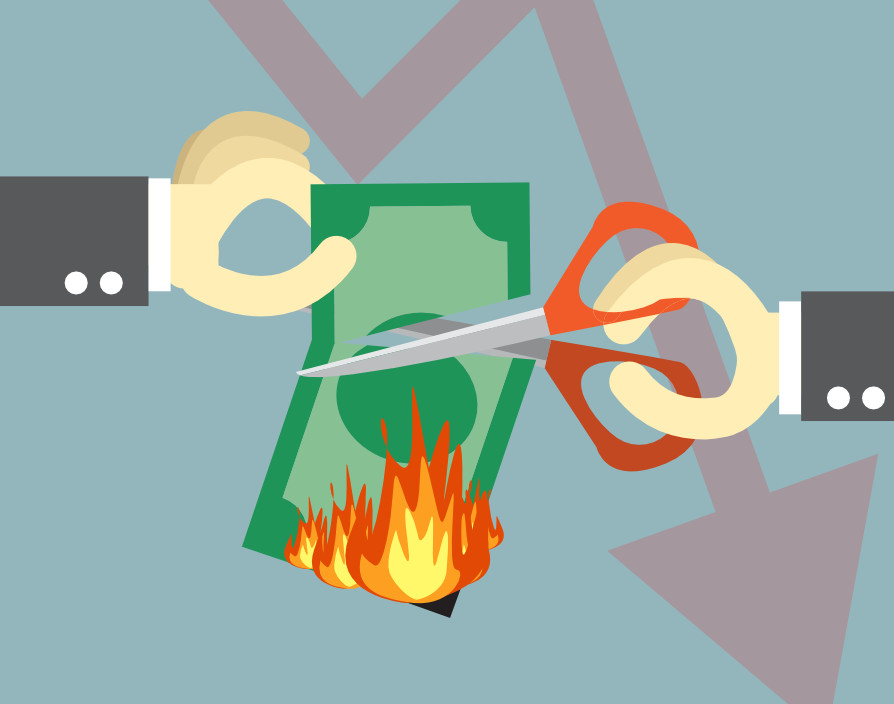Don’t be scared to cut your losses if it’s blatantly obvious your most precious idea is heading towards failure. This is the message from Phil Hobden, head of education at Capitalise.
Let me take you back to the year 2000. It was a time when Craig David dominated the charts with an earworm describing how he filled up his seven day week.
There had been fears the world would end with Y2K, commonly known as the millennium bug, which was predicted to crash computer operating systems as the clock ticked over from December 31st, 1999 into the new century. But it didn’t happen.
Euro 2000 didn’t go as planned ‘ as usual. We finally beat Germany but lost to Portugal and Romania, and an unknown builder from Merseyside called Craig Phillips won a new show called Big Brother.
It was also the year I purchased my first ever Apple Mac computer. And it was almost my last. It was the much-heralded Power Mac G4 Cube. It was gorgeous, the polar opposite of a typically boring tower PC unit which populated offices and homes up and down the country.
It was a seemingly levitating square of computer, as well as art, clad in a single piece of plastic that almost magically sucked in your CD-Roms. Launched with much fanfare, it remains today one of Apple‘s most debated designs. Adored by fans but, as usual for Apple, criticised for being more design than substance and power.
But I didn’t care. As a 22-year-old, I viewed this as the ultimate computer peacocking ‘ and I had to have one. The small issue, however, was that being an Apple product it was going to cost me a shade under £3,000. But I saw this as an investment? Perhaps even a piece of art.
It was, in fact, a total waste of money. My prized Mac G4 cube did little more than become a machine for playing SimCity, or karaoke songs with my flatmates, and mundane tasks such as checking emails. In my opinion, the old Mac OS was a dog which struggled to run a lot of the software I had used on my old PC. But ‘hey’ it looked the part!
Within a year, I ended up selling the whole system ‘ and for a whole lot less than I’d paid for it. As a result, I vowed never to go back to Apple again. And I didn’t, until the iPhone came along and that changed everything.
This month marks the 20th anniversary of that ill-fated computer. It also marks the 19th anniversary of Apple boss Steve Jobs killing it. Even today, the G4 Cube is still an intoxicatingly beautiful computer.
I always assumed it was a big hit for Apple but, in truth, the G4 Cube was a huge flop. It sold just 29,000 units between October and December 2000, compared to over 300,000 Macs during that same period. In the very next quarter, sales fell to 12,000 and it was later discarded for good.
Steve Jobs adored it. It was everything he wanted a personal computer from Apple to look like. However, when he realised it was a failure, he didn’t hesitate to move on, killing the whole production line.
Famous Cornish writer Sir Arthur Quiller-Couch once remarked: Never be afraid to kill your darlings. And there’s a huge lesson here for everyone. You may have invested time, effort, emotion and money into a product. You may love it dearly but if it doesn’t connect with your market, then killing it may be the best way forward.
Of course it’s a tough call, but it’s what makes leaders like Jobs truly unique. He had the insight and knowledge to understand when to cut his company’s losses. He knew when to walk away and move on to something new. Evaluate what went wrong, learn from it and don’t make the same mistakes again.
To sum it up, ‘you may love the idea, but if the product doesn’t serve its purpose, then kill it,’ to para-phrase something I read recently.
As it happens, despite once thinking I should leave Apple well alone, my entire household runs off Apple devices nowadays. I often joke that I feel like a brand ambassador every time I leave the house.
We all have an iPhone, AirPods, a Mac, iPads and most recently an Apple watch. Even my work computer is a MacBook Air. But I wouldn’t have believed this was possible 19 years ago.
“
Share via:









































